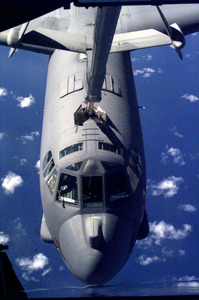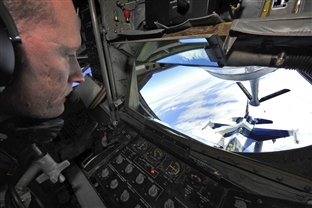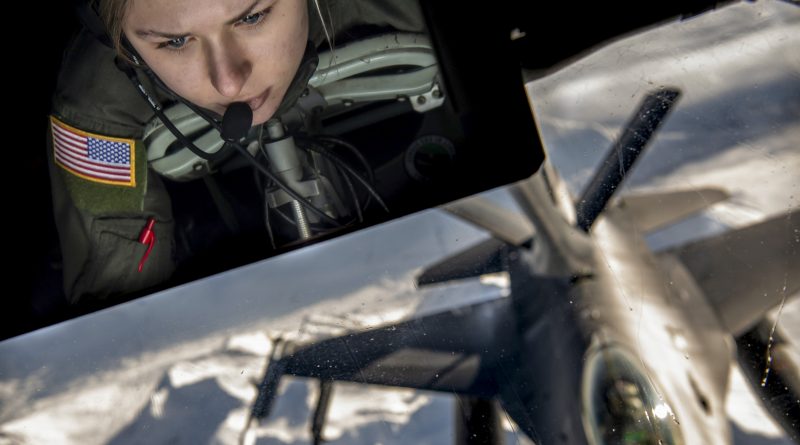Great River Technology Unveils XL High-Speed ARINC 818 Sensor Test Card: A Revolutionary Leap in Sensor Testing
In the dynamic landscape of aerospace technology, the pursuit of high-speed target recognition encounters a relentless challenge – the ever-escalating speed of objects and the precision required to address them. Great River Technology has emerged as a trailblazer, assembling a team of visionaries to explore the innovative use of ARINC 818; this has contributed significantly to Prime Contractors and the low-latency video transfer they require. This groundbreaking approach aims to address a myriad of applications today’s warfighters face.
ARINC 818: The increasing precision required
Real-time determination of an object’s speed and direction has propelled sensor and image-capturing capabilities beyond the comprehension of most humans. The mind-boggling speeds of a supersonic missile at Mach 5 mean that it would cover approximately 1875 yards in one second. ARINC 818 takes center stage as the optimal choice, surpassing alternatives like AFDX. Designed initially as a video-specific bus for avionics, ARINC 818 has proven its versatility by excelling in precision-demanding, low-latency applications.
XL Card: Catalyst for RVS 2.0 Innovation
The unveiling of the XL High-Speed ARINC 818 Sensor Test Card was pivotal in Collins Aerospace and Boeing’s collaborative development and testing of the RVS 2.0 system. The RVS 2.0 vision system represents a monumental leap for the Air Force’s KC-46 fleet boom operators. Leveraging 4K ultra-high-definition cameras, this system offers operators a vivid, sharp 3D image for precise guidance during aerial refueling maneuvers. The XL card emerged as an essential component in testing the RVS 2.0 system, showcasing Great River’s critical role in facilitating the development of this state-of-the-art vision system.
ARINC 818: Revolutionizing Avionics Digital Video Bus
ARINC 818, or Avionics Digital Video Bus (ADVB), is the industry standard for high-bandwidth, low-latency, critical video systems. Adopted by major commercial and military aerospace programs, including the F-18, C-130, Boeing 787, Airbus A400M, and the A350XWB, ARINC 818 has revolutionized high-performance video systems.
 Introduction to ARINC 818
Introduction to ARINC 818
Released in January 2007, ARINC 818 addresses the need for high-performance, uncompressed digital video transmission in aerospace applications. Building on the Fiber Channel Audio Video (FC-AV) protocol used in earlier programs, ARINC 818 provides a standardized solution for high-speed video systems.
Overview of ARINC 818 Protocol
ARINC 818 operates as a point-to-point, encoded serial protocol for transmitting video, audio, and data. Packetized with a strong focus on video-centric functionality, the protocol allows the multiplexing of multiple video streams on a single link or transmitting a single stream over a dual link. The protocol defines four video classes, accommodating simple asynchronous to stringent pixel-synchronous systems.
The protocol’s versatility extends to video formats, color encoding schemes, timing classes, and embedded data sizes. Acknowledging the impracticality of a universal system, each program defines an Interface Control Document (ICD), streamlining project scope and implementation complexities.
Initially conceived for uncompressed video and audio, ARINC 818 has adapted to evolving needs. The rise of high-resolution sensors, UAV/UAS with bandwidth-limited downlinks, and data-only applications has prompted discussions on link compression and encryption, balancing detail levels in the specification to align with contemporary application demands. The dynamic nature of ARINC 818 positions it as a resilient solution, continuously evolving to meet the complexities of high-speed target recognition.
The adoption of ARINC 818 spans various critical systems within aircraft, including infrared and optical sensors, map/chart systems, synthetic vision, Heads-Up Displays (HUDs), Multi-Function Displays (MFDs), video concentrators, and other subsystems. Its versatility makes it a preferred choice for taxi and take-off assistance, cargo loading, navigation, target tracking, collision avoidance, and more.
As ARINC 818 continues to be embraced by military programs, graphics and video system designers must familiarize themselves with the protocol, implementation issues, and available development tools. The standard’s proven success in commercial and military aerospace programs positions it as the de facto standard for high-performance military video systems.
Features of the XL High-Speed ARINC 818 Sensor Test Card
The XL card, designed as a Commercial Off-The-Shelf (COTS) solution, caters to the evolving demands of next-generation Enhanced Vision Systems (EVS), Electro-Optical/Infrared (EO/IR) systems, 3D displays, and Intelligence, Surveillance, and Reconnaissance (ISR) systems. Key features include:
Video Concentration and De-concentration: Facilitating the concentration and de-concentration of multiple sensors onto a single link while maintaining frame synchronous timing.
Support for 4K+ Stereo Displays: Incorporating support for high-resolution 4K+ stereo displays, offering robustness testing capabilities, error injection, and consideration for channel skew.
Pixel Format Compatibility: Providing comprehensive support for various pixel formats used by optical and infrared sensors, including Bayer video.
ARINC 818 Link Rates: Supporting ARINC 818 link rates ranging from 12.0 Gbps to 28.05 Gbps, ensuring compatibility with a wide range of high-speed sensor applications.
Great River Technology: A Leader in ARINC 818 Implementation
Founded to provide performance digital video and data development tools for the military and aerospace industry, Great River Technology demonstrates a commitment to SWAP-C solutions. The company’s team of engineers has actively contributed to standards and review committees, showcasing creativity in addressing the dynamics of the aerospace industry. Great River Technology offers a comprehensive product suite for ARINC 818 video generation, capture, conversion, and analysis, supporting the entire life cycle of ARINC 818-enabled equipment. Additionally, the company provides IP Cores, embedded circuit cards, and video converter modules for seamless integration into airborne systems, significantly reducing development time and costs.
Conclusion
The unveiling of the XL High-Speed ARINC 818 Sensor Test Card by Great River Technology marks a significant milestone in the evolution of sensor testing and avionics digital video systems. With its robust features and successful testing of the RVS 2.0 platform, the XL card showcases Great River Technology’s commitment to innovation in the aerospace industry. As ARINC 818 continues to shape the landscape of high-performance video systems, the collaboration between industry leaders and technology providers becomes pivotal in defining the future of avionics.

